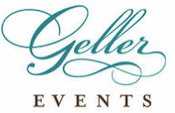Regardless of what Raquel says, I really did try to participate and
pay attention to details throughout the wedding planning process. Sure, I
may have “zoned out” during some moments (see: wedding invitations) but
for the most part I was there. So near the end of the planning process
we decided that we wanted to have a photo booth type experience for
everyone to enjoy. But wouldn’t you know it, we ran out of money.
So
I decided to take it upon myself to build a photo wall for us to use at
the wedding. Mind you, at the time we were living in a 1 bedroom
apartment, with no garage, a semi-covered outdoor patio space, and oh
yeah, no power tools except for a drill! But thanks to the help of my
dad and now father-in-law, the photo wall was finished the day of the
wedding and turned out to be a huge hit! We added our own touch by
making it an "Awkward Family Photo Wall" and displayed less than
flattering pictures of us and our family over the years. We then bought a
Polaroid Camera and let people take pictures themselves, rather than spend money on a photographer. We now have an album full of all the Polaroids and
everyone's comments, which is priceless (for many reasons).
It was a great sense of
accomplishment to see the finished product and I felt like I really
contributed something meaningful to the wedding since so many people
enjoyed it. I had “plans” and “ideas” of the materials I would need and
the steps it would take to build the photo wall, but as they say,
nothing goes as planned. This is designed to be a walkthrough of the
process for you to create your own photo wall for your wedding. Your
wall may require different materials or additional steps, but this is a
great guide to help you through the process. And as with any project
involving power tools, take all proper precautions and wear protective
gear (glasses, gloves, etc.) when necessary.
1. Decide
the size and layout of the photo wall you would like to have. It is
very important to have a plan in place before beginning this project.
Make sketches, draw pictures, and visualize what you want it to look
like so you know what you are working toward.
2.
Buy the materials for that size. We decided on 10 feet wide by 7 feet
tall. I’ve seen other walls built 8 feet by 8 feet because it is easier
to buy (2) 4’x8’ sheets of plywood and make the wall that way. But those
of you who know my wife, know she is not that simple. So of course I
had to make ours bigger.
Materials
you will need: sheets of plywood, 1”x2” studs to frame the back of the
wall for support, 4”x”4 beams for floor/leg support, 2”x4” studs for
angled support between framing and floor beams, L brackets to join 4x4
to framing, screws, nails, fabric (or wall paper, depending on your
preferred finish), wainscoting, chair rail, and picture frames (also
sand bags or other weights to throw on the legs, just for extra
precaution)
Tools needed:
circular saw (jig saw or reciprocating saw also preferred to cut the
windows), drill, hammer, screwdriver, sandpaper, glue, scissors, and
staple gun
3. Now that you
have the materials, you can begin the assembly. First, I framed the
plywood with the 1”x2” studs, on all four sides, using screws every 8-10
inches. You will need to cut the studs to fit the size of your wall.
This makes the wall stronger and will help maintain a true “wall” shape,
otherwise the plywood is going to warp or bend and make it look
crooked.
4. Decide how many and
where you want the “windows” to be (When I refer to windows its actually
going to be a picture frame, but its open, so you and your guests can
stand behind the wall and make it look as if you are the ones in the
picture). It helps to actually lay out the picture frames you have
bought on the wall and tracing the inside of them to mark where cuts
should be made. This should be done on the opposite side of where the
framing is.
5. Cut the windows
out along the lines you traced from the inside of the picture frames,
using a jig saw or reciprocating saw. Use the sand paper to smooth the
edges of the windows so there are no splinters or rough pieces of wood
sticking out.
6. Next, attach
4”x4” beams to the bottom corner of the wall framing to become the floor
support. To do this, use the L bracket and screws. For our wall, I used
a 5” L bracket and 1” lag screws to join each 4x4 to the framing.
Again, this is to be done on the back side of the wall.
7.
Once the floor beams are attached, the ends of the 2”x4” beams need to
be cut at an angle so one side will be flush with the floor beam and the
other side will be flush with the framing of the wall. Screw the 2x4 in
place using wood screws.
8. At
this point, the wall should be free standing and ready to begin work on
the front side. This is where your creativity and individualized look
will come into play. We decided to buy a patterned fabric and use that
as our “faux” wall paper. It took some time to match the pattern up on
each of the three pieces (I told you she never makes things easy on me),
but eventually it worked. We then attached the wainscoting to the
bottom portion of the wall using wood glue and tack nails, added the
chair rail using white screws so it could be removed easily, and finally
added all of the picture frames to make the project complete. Whatever
you decide to do, fabric or wall paper, the order should be: 1)
wallpaper/fabric, 2)wainscoting and/or chair rail if desired, 3) picture
frames.

This is a great way
for the fellas to get involved in the wedding process. It ended up being
more work than I expected, but as I said I felt a great sense of pride
and accomplishment knowing I was able to contribute something fun
to the wedding and the fact that the thing didn't fall apart.













































